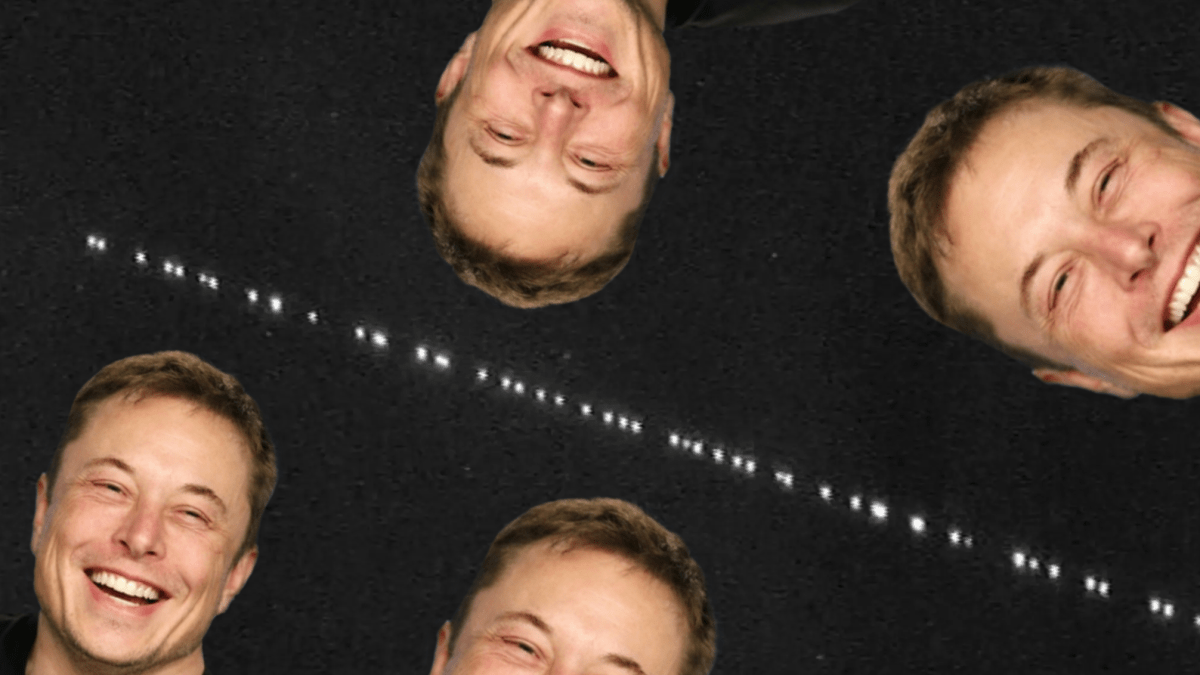
Alrighty, here’s a doozy for you: astronomers both professional and amateur are mighty peeved because Elon Musk‘s brand-spanking-new chain of satellites might have changed the night sky permanently.
The first 60 of a planned 12,000 satellites were launched into space last Thursday by Musk’s company SpaceX, as part of an intended effort to beam internet back down to Earth. You can watch the official stream of the Starlink launch here, if you feel so inclined:
But soon, complaints emerged. Namely from astronomers on social media who expressed concern that 12,000 satellites will quite possibly outnumber visible stars, permanently changing the night sky for the world without anybody’s input.
I know people are excited about those images of the train of SpaceX Starlink satellites, but it gives me pause.
They’re bright, and there are going to be a lot of them.
If SpaceX launches all 12,000, they will outnumber stars visible to the naked eye.
— Alex Parker (@Alex_Parker) May 25, 2019
https://twitter.com/JeffreyCHall/status/1133552964210028545
https://twitter.com/DrDasB/status/1132442989274517504
One astronomer, Marco Langbroek, filmed and uploaded a video of the Starlink satellites passing in a train. It’s a pretty spectacular sight.
Multiple astronomers identified the Starlink satellites in the sky through Tuesday, when they reached an altitude of 450km. It’s currently unknown how visible they will be when they hit their intended operational altitude of 550km over the next month.
Musk initially replied to criticism by agreeing with other people on Twitter that the satellites would not be visible at night.
Precisely, sats will be in darkness when stars are visible
— Elon Musk (@elonmusk) May 25, 2019
However, others dispute this. Cees Bassa, an astronomer at the Netherlands Institute for Radio Astronomy, ran some calculations on the trajectories of the first 1,584 satellites – which have been released to the public ahead of their launches – and suggested that about 15 satellites will be visible above the horizon for three to four hours after sunset and before sunrise.
One all 12,000 are up, that number could increase to between 70 and 100. “These mega constellations are going to add drastically to the number of satellites that are visible at any time,” Bassa told The Guardian.
Astronomer Michael J. I. Brown of Monash University writes in The Conversation that a large number of satellites visible to the naked eye would be “a disaster”:
Satellites are very definitely visible at night, particularly in the hours before dawn and after sunset, as they are high enough to be illuminated by the Sun. The Space Station’s artificial lighting is effectively irrelevant to its visibility.
In areas near the poles, including Canada and northern Europe, satellites in low Earth orbit can be illuminated throughout the night during the summer months.
Hundreds of satellites being visible to the unaided eye would be a disaster. They would completely ruin our view of the night sky. They would also contaminate astronomical images, leaving long trails across otherwise unblemished images.
SpaceX isn’t the only company planning to launch satellites into orbit to provide terrestrial internet, so it’s likely that this issue will only deepen over time.
The moral of the story is this: if you lob a bunch of shiny satellites into space, you are probably going to annoy some nerds. Ya gotta figure that into the equation!



